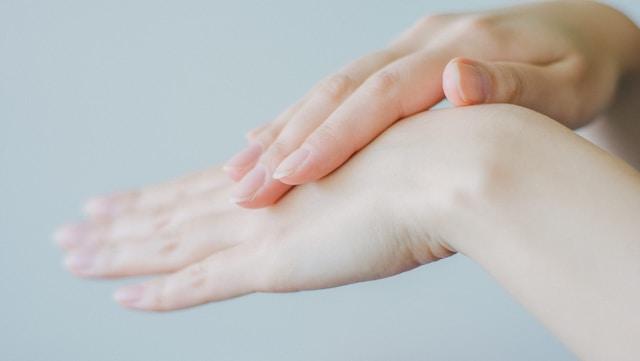With summer already very hot, and spring particularly wet, mosquitoes (like ticks) are particularly plentiful this year. Last year, we had more wasps, and I shared with you my recommendations for keeping them at bay; this year, it's mosquito bites that I'm going to help you avoid as much as possible.
Until recently, avoiding these bites was a matter of comfort: their consequences don't go much further than a reddening of the skin and a pesky itch; but with the spread of the tiger mosquito over our territory (I'll come back to this), the stakes are different.
Mosquitoes: why do you get bitten when others don't?
The "elective affinities" of mosquitoes have long intrigued science: why you get eaten at night when your spouse or neighbor wakes up in the morning without a single bite remains a mystery. The hypothesis that has held sway for some time now concerns the carbon dioxide released by our skin. The more CO2 we emit, the more prone we are to stings.
Another study, carried out in 2004, claims that people with blood type O are more attractive to mosquitoes than those with blood types A, AB and B. Finally, more recently - and more comically - researchers in the state of Virginia studied the "attractiveness" of mosquito victims according to their soap!
According to their study, soaps with floral or fruity scents leave an olfactory imprint on the body that is particularly attractive to mosquitoes. Of all the products tested, the one that seemed to have a repellent effect was a coconut soap.
The sample of people tested is too small to conclude that coconut-scented soaps are inherently repellent, especially as a person's natural scent combined with a soap produces a singular chemical formula. Fortunately, larger-scale studies have identified which essential oils are the most effective mosquito repellents.
Here is the "champion" of essential oils mosquito repellent
The problem with commercial repellents is that they're loaded with chemicals that aren't always advisable. The good news is that the molecular formula of certain essential oils makes them just as effective repellents, if not more so. A 2009 study compared the repellent effect of citronellol-, geraniol- and linalool-based candles and essential oil diffusers.
Here are the two main lessons to be learned from this study:
- Protection is better with an EO diffuser than with a candle, probably because of the higher active active ingredient content (only 5% in most candles and almost 20% in diffusers);
- Of all the molecules making up EO, it is the geraniol has been shown to have the most powerful repellent effect, followed by linalool and citronellol.
These three molecules are used in the composition of very different EOs, but also in very different proportions. It is therefore possible to draw up a list of mosquito repellent EOs according to their composition. At the top of this list is the essential oil of palmarosa (Cymbopogon martinii), composed of 80 to 90% geraniol and linalool.
The next most effective repellents are :
- The EO of rose geranium (Pelargonium graveolens), composed of 55 to 60% citronellol, geraniol and linalool.
- The EO of lemongrass (Cymbopogon winterianus), composed of 30 to 40% citronellol and geraniol.
- The EO of linalool thyme (Thymus vulgaris linaloliferum), composed of 60 to 75% linalool and terpenes.
- The EO of fine lavender (Lavandula vera), composed of 35 to 50% linalool.
- EO oflemon eucalyptus (Eucalyptus citriodora), composed of 20% citronnellol and geraniol.
- The EO of lemongrass (Cymbopogon flexuosus), composed of 10% geraniol.
Mosquitoes: when and how to use them?
According to the 2009 study, using these EOs indoors via a diffuser is far more effective than using candles (14% protection for a citronella candle, versus 68% for a diffuser). Outdoors, a citronella diffuser placed 6 meters from a mosquito trap scared off 22% of female mosquitoes, while a linalool diffuser repelled 58% and a geraniol diffuser nearly 75%, confirming the superior repellent power of geraniol.
You can also apply roll-ons or sprays of these oils to your skin or clothes, on your ankles, neck and wrists, to generate a fragrant, protective aura against their attacks. Or simply place a few drops of these EOs in strategic places! On your bed, wrists or ankles, for example.

Mosquitoes: conclusion
As you know, an exotic species of mosquito, the tiger mosquito (Aedes albopictus), is gaining ground in Europe every year, aided by global warming. In France, in just a few years, it has colonized 71 of the country's 96 departments, moving inexorably northwards, as shown by this map drawn up by the Ministry of Health.
However, its presence is much more marked in the south, and in urban agglomerations: it is particularly active along the Mediterranean coast, on the Atlantic coast from the Spanish border, as well as in Bordeaux, Lyon and Paris. The tiger mosquito's bites are far more problematic than those of its European cousins, as they are more painful, more inflammatory and, above all, carry the risk of transmitting vector-borne diseases such as dengue fever, chikungunya and zika.
Yet another characteristic distinguishes tiger mosquitoes from our "native" mosquitoes. Our native mosquitoes are active at night, and their flight can be recognized by their irritating whirring. Tiger mosquitoes, on the other hand, are active during the day, and make no noise when they fly!
So the advice I gave you above - if you live in one of the areas particularly concerned, i.e. the South of France and/or a very large urban area - should be applied not only at night, but also during the day.



